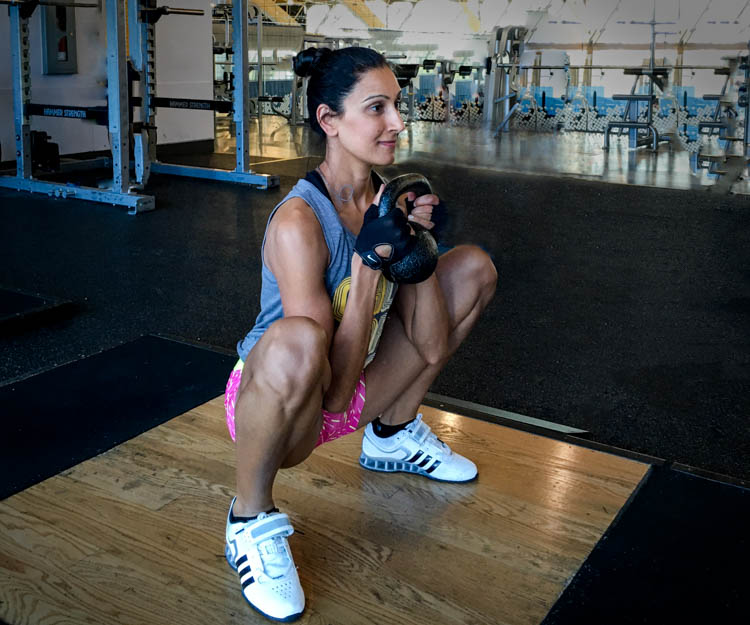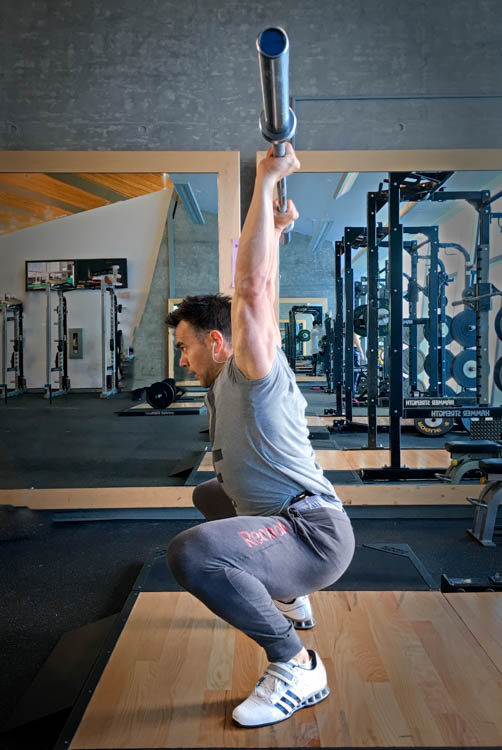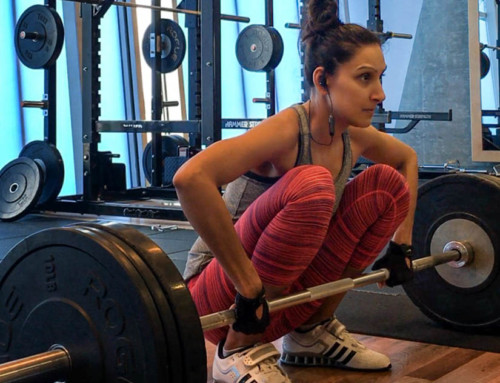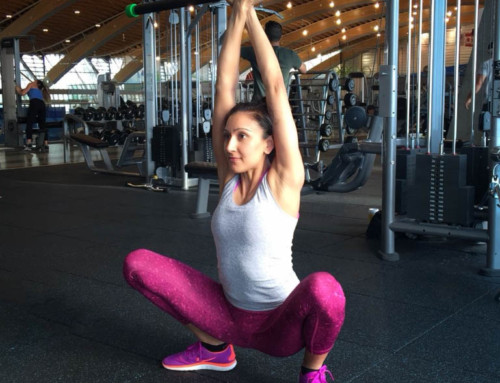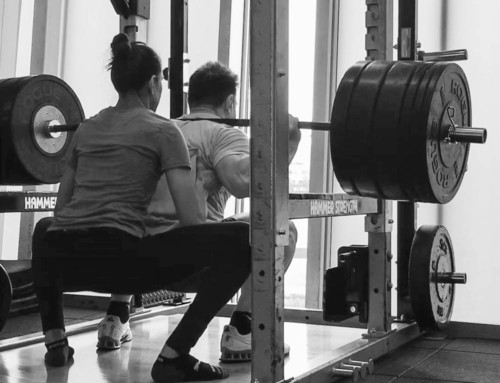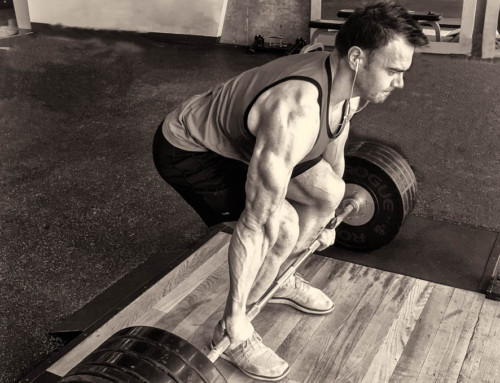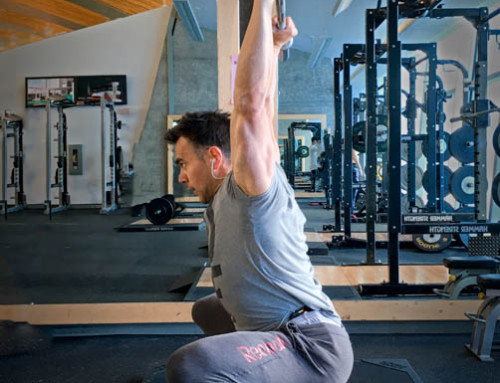The goals of any physical activity—whether in form of weight-room strength training or a long endurance run—are to finish the task, improve overall performance and avoid injuries in the process. Furthermore, an important aspect of any successful training session is to “prep” the body to perform scheduled physical tasks.
Warm-ups have been around for a long time but, often overlooked to save time and/or energy for the main exercising activity. The same reasoning plays a role in lack of cool-downs after the session, as most people simply pack up and leave—without brining the body back to lower active state.
In this article, we’ll look at warm-up and cool-down portions of training and discuss their importance in overall success.
Warm-up
The goal of any warm-up (regardless of type of training) is simple:
- to prepare the body for the physical stress it’s about to embark on by increasing neuromuscular and cardiovascular systems participation, and
- limit chances for injury by engaging muscles, joints and connective tissue through dynamic motion.
Elasticity gained through stretching (be it dynamic or static in nature) compliments some of body’s biomotor abilities by improving mobility, flexibility and technique within specific biomechanics. All of these benefits lead to increased performance in the gym, on the track or on the field.
Dynamic vs. Static Stretching
Dynamic stretching are movements (specific to type of exercise the body is about to go through) that gradually activate associated joints, muscles and connective tissues within that motion. By moving the body or part of the body, in similar and repetitive way to scheduled training, you engage appropriate systems, increase blood flow, reduce overall stiffness and risk of injury.
Dynamic stretching should be done before the start of overall physical activity of choice. This stretching or movements should be training specific and can vary depending on personal preference. By the end of warm-up including dynamic stretching, the body should feel warm and loose, able to achieve specific positions and joint angles of main training movements.
Static stretching is holding a specific position for a certain muscle or a joint that is slightly challenging. Here, the goal is to simply stretch and elongate the tissue. These stretches can be for almost all of the body’s muscles and joints, through holding a specific position from 30 to 60-seconds.
Due to muscle elongation and holding specific joint angles, static stretching relaxes the body while increasing flexibility and mobility within targeted areas. We can often feel a nice relaxation feedback after coming out of a specific static stretch placed on the leg or the arm muscles.
Static stretches often result in the relaxation of targeted body parts, and may decrease muscular activation (ability to contract and produce force). Now, this is not a hard and fast rule but simply a guideline into how the body responds. Due to increases in flexibility and mobitliy, some specific static stretching positions may still be incorporated into a warm-up portion however, majority of these holds are reserved for after the main bouts—cool down.
SLF Warm-up Components
At Science and Strength, warm-up is a multi-stage process.
- Prior to starting any training session, we engage in low level cardiovascular activity for approximately 5 to 10-minutes. This can include jogging on slight incline, skipping rope or rowing machine. Generally, we try to select form of cardio that incorporates more muscles, resulting in increasing blood circulation to all the areas.
- After a brief cardio, we begin our warm-up which includes predominantly dynamic stretching, but also has some static holds as well. Now, you may be thinking that static stretching is a bad idea as such methods relax the muscles, decreasing their activation and overall performance. You are correct however, don’t forget that static stretching also improves mobility and flexibility. Each warm-up should have a purpose and for us, that is always improving overall skill development within functional movements and increasing biomotor abilities. These dynamic/static stretching routines are flexible and incorporate movements specific to the training session. The goal is to improve range of motion (ROM) of practiced movement for the duration of another 10-minutes or so. Here, we practice proper form, engaging specific joint angles while coordinating muscles within the motion.
- For example: during lower body training, we sit into a full squat position (bodyweight or goblet squat with holding a DB/KB at chest level) while tracking knees outwards. This warm-up will include static holds at the bottom squat position, engaging muscle and connective tissue focusing on upright position as well as the knees, hips and ankle position and mobility. Also during these warm-up repetitions, the focus is on engaging quads and glutes during the lower body push motion by paying attention to foot and upper body positions as well as power development through concentric (positive) contraction.
- Optional – foam roller. Foam roller is a good tool for assisting with myofacial tissue release and is done primarily during recovery phase. Some of the body areas which are hard to get to during standard static and dynamic stretching, can be “rolled out” with a foam roller, such as hip flexors, area around IT band and back lats. But first, not all foam rollers are created equal. If you are choosing to roll before the training session, use a polyvinyl chloride (PVC) style roller, as they are less comfortable but time efficient. Personally, we like our foam roller but not for the warm-up.
- The warm-up should continue well into the training exercises. Compound lifts including strength and power are pyramided-up to working intensities. During this ascent, each exercise contains several warm-up sets. Again, these warm-up sets are a delicate balance between recruiting appropriate motor units (MUs) and raising core temperature, while minimizing fatigue and overall energy depletion.
SLF Cool-down Components
Vitality is a great goal for anyone’s lifestyle including our training. To be strong, active and energetic you need a physically and mentally productive body. Cooling down the body comes with numerous benefits including faster and smoother recovery, and greater noted performance within future training sessions or competitions.
At Science and Strength, we maximize on this element by initiating cool-down techniques during and after the training session.
- Cool down process is initiated during the last leg of the training session during Accessory lifts. The accessories are primarily designed to pay additional focus towards lagging parts. However, accessories also have a secondary role—blood flow. Through volume, often presented in a superset/round set-up, the overall blood circulation is increased. By this stage within exercise session, the body has built noticeable physical fatigue through main lifts. The accessory work engages already active motor units (MUs) without additional stress to central nervous system (CNS). The goal here is maintaining the core temperature and blood circulation. Greater blood flow rushes nutrients to the worked areas while removing accumulated byproducts and debris generated by muscular contractions.
- After accessory, the next state is static stretching component. These static holds are specific to major muscles that were worked during the training session. During static stretching, some movement is used to slightly modify joint angle thus lengthening the target muscle to a greater extent. We do about five or six stretches focusing on worked muscles, with 30 to 60-seconds per hold.
- Foam Rolling / Static Stretch combo. This is done, prior to heading to bed, or first thing in the morning. Foam rolling is an good cool-down and recovery option, by slowly rolling over stiff muscle areas. Focus on ten to fifteen rolls, beginning with the lower body and working your way up to the upper extremities. Foam rolling does not have to be extensive, and simply softening the muscle state, as the accumulated delayed onset muscle soreness (DOMS) from your last training session remains afterwards. Foam rolling will however help with overall recovery and should be fairly fluid lasting about ten minutes. After rolling your muscles, apply several static stretches of the targeted areas to further lengthen worked tissues. Again, quick four to five different stretches with 30 seconds per stretch will be plenty. The overall time is another 5 to 8-minutes.
Final Thoughts
Warm-up is a process to engage body systems and prepare them for the upcoming mechanical loads within physical activity. This should progress gradually, engaging muscle, joints and connective tissue. Successful warm up recruits appropriate motor units and raises core temperature, thus improving overall training performance while limiting risk of injury.
Warm-ups should be flexible and directed towards type and style of training to be done. At Science and Strength, warm-up are part of every exercise session comprised predominantly of dynamic stretches that progress into main and specific lifts.
After the main training practice, attention is turned towards regeneration. This includes properly cooling down the body, preparing it for optimal recovery. Cool-down includes static stretching and foam rolling of worked body areas. Cool-down has been shown to improve overall recovery and future physical performance.
If you liked this post feel free to share with others; and leave us a comment with your thoughts on the topic. Cheers!
BTW – you may also be interested in learning more about our Training:

